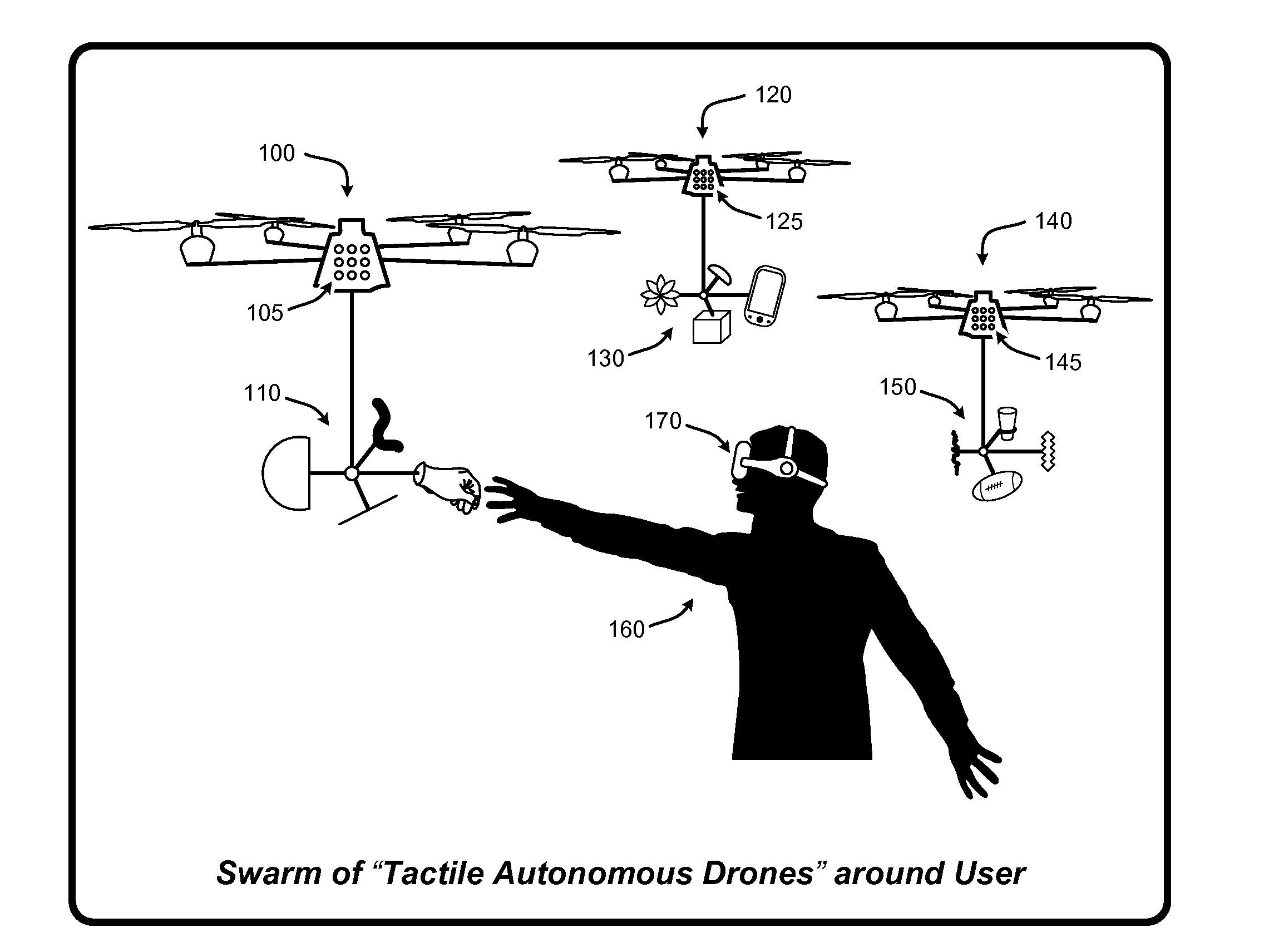Autonomous drones for tactile feedback in immersive virtual reality
a technology of immersive virtual reality and autonomous drones, applied in the direction of vehicle position/course/altitude control, process and machine control, instruments, etc., can solve the problem that the 5 is not intended to provide an exhaustive or complete illustration of every possible implementation of the tad, and achieve the effect of improving user experience and sense of reality
- Summary
- Abstract
- Description
- Claims
- Application Information
AI Technical Summary
Benefits of technology
Problems solved by technology
Method used
Image
Examples
Embodiment Construction
[0016]In the following description of various implementations of a “Tactile Autonomous Drone” (TAD), reference is made to the accompanying drawings, which form a part hereof, and in which is shown by way of illustration specific implementations in which the TAD may be practiced. Other implementations may be utilized and structural changes may be made without departing from the scope thereof.
[0017]Specific terminology will be resorted to in describing the various implementations described herein, and that it is not intended for these implementations to be limited to the specific terms so chosen. Furthermore, it is to be understood that each specific term includes all its technical equivalents that operate in a broadly similar manner to achieve a similar purpose. Reference herein to “one implementation,” or “another implementation,” or an “exemplary implementation,” or an “alternate implementation” or similar phrases, means that a particular feature, a particular structure, or particu...
PUM
 Login to View More
Login to View More Abstract
Description
Claims
Application Information
 Login to View More
Login to View More - R&D
- Intellectual Property
- Life Sciences
- Materials
- Tech Scout
- Unparalleled Data Quality
- Higher Quality Content
- 60% Fewer Hallucinations
Browse by: Latest US Patents, China's latest patents, Technical Efficacy Thesaurus, Application Domain, Technology Topic, Popular Technical Reports.
© 2025 PatSnap. All rights reserved.Legal|Privacy policy|Modern Slavery Act Transparency Statement|Sitemap|About US| Contact US: help@patsnap.com



